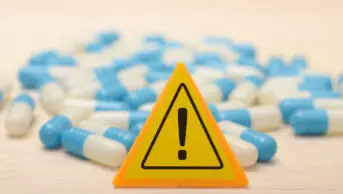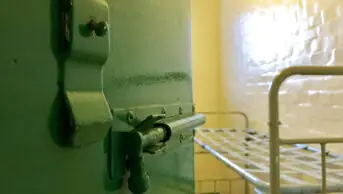This content was published in 2012. We do not recommend that you take any clinical decisions based on this information without first ensuring you have checked the latest guidance.
PEOPLE create safety. At the coal face, minute by minute, safety may either be eroded by errors and casual deviations from procedure or, conversely, be created by skilful, safety conscious professionals. People partly create safety by being conscientious, disciplined and following rules. However the treatment of complex, fluctuating conditions also requires thinking ahead and being prepared to adjust treatment as a patient’s condition changes.
When thinking about safety, however, we are also calling on a broader vision in which clinicians are anticipating not only the disease, but also the functioning of the organisation in which they work, assessing the hazards emanating from both. Patients, too, have to anticipate the course of their disease, the gaps in the healthcare system, and they and their families play a critical role in ensuring their safety.
Patient involvement in patient safety
Patients and their families have a critical, privileged perspective on many aspects of healthcare. The patient may not, of course, understand the technical and clinical issues at stake, but they do observe and experience the kindnesses, the small humiliations, the inconsistencies in care, the errors and sometimes the disasters. People with chronic illnesses become experts not only on their own disease but on the frailties, limitations and unintentional cruelties of their healthcare system.
The trouble is when we are patients, while we have great insight into the frailties of the healthcare system, we find it astonishingly difficult to make our voice heard, particularly where errors and safety are concerned.
Patients’ willingness to engage
Patients are usually thought of as the passive victims of errors and safety failures, but there is considerable scope for them to play an active part in ensuring their care is effective, appropriate and safe. Instead of treating patients as passive recipients of care, it is much more appropriate to view them as partners or co-producers with an active role. The degree to which patients can be involved will vary considerably depending on the nature and complexity of the treatment and the degree of technical knowledge required to understand the treatment process. Most importantly it will depend on the extent to which each person feels willing and able to play a more active role and whether they are encouraged in this by those who are caring for them..
Some organisations have produced leaflets setting out what patients can do to make their own care safer. The US Joint Commission on Accreditation of Healthcare Organisations, for instance, has campaigned for patients to “speak up” to prevent errors in their care (www.jcaho.org). Encouraging patients to ask questions about their medication to make sure they understand, not to take a medicine unless they are clear about its purpose and to be responsible for their own contribution to their treatment seem reasonable and useful precautions.
Much more difficult is the suggestion that patients might actively challenge a health professional. Patients [in hospitals] are meant to observe whether their identify band has been checked, tell the staff if they think they might be being confused with another patient and remind nurses and doctors to wash their hands. Although well intentioned, this is a considerable extension of the patient’s role and, arguably, an abdication of responsibility on the part of healthcare staff.
A small number of studies have assessed patients’ willingness to speak up and otherwise check on procedures. Most people are prepared to ask about the reason for a procedure, but many fewer would consider refusing care, such as a radiograph or the taking of blood that they had not been told about. Fewer still say they would be willing to remind doctors or nurses to wash their hands and only about 5 per cent actually did so when the opportunity arose. However some small studies have shown patients are much more willing to remind staff to wash their hands when staff and patients are equally involved in hand hygiene initiatives.
There are, however, some impressive examples of patients being actively involved in the management of a hospital, entirely changing the nature and tone of the usual patient-clinician relationships. For example, by involving patients the Dana Farber Cancer Centre in Boston, Massachusetts, learnt that patients with neutropenia often experienced long, wearying waits in emergency departments, seriously delaying the start of treatment. Telephone screening and direct admission to appropriate wards transformed this process and reduced the risk of infections and other complications.
Safety skills
Expert clinicians, indeed experts in many fields, learn to work confidently yet safely, by anticipating and negotiating the hazards of their work. Junior staff learn these skills by trial and error or, if they are lucky, by observing experts recover from dangerous situations. In healthcare, unlike many other high risk industries, these skills are seldom explicitly identified or formally trained.
We perhaps cannot be trained in [all] these attributes, but we can certainly foster them in the wider culture and ethos of the organisation. Some of the skills, however, are more tangible [such as] anticipation and vigilance.
Anticipation and vigilance
Anticipation is a key component of expertise in many areas. Essentially it involves thinking ahead and envisioning possible problems and hazards. If you drive a car in heavy rain you need to constantly think about what might happen. Suppose the tyres do not grip. Suppose the car in front brakes suddenly. Thinking in this way is explicitly taught in advanced driving courses as a necessary foundation for safe yet confident driving.
Experts are constantly thinking ahead and looking to the future. For instance, one researcher showed surgeons a video of an operation involving an 80-year-old woman with an infected gallbladder that needed to be removed. She used the video as a prompt to ask the surgeons how they prepared for such an operation and what they would be thinking at each stage. She found that experienced surgeons made more predictions about likely problems than their junior colleagues. In particular they predicted that they would have difficulty in dissecting and identifying the surrounding structures, because the gallbladder and surrounding areas would be swollen and inflamed. With these predictions in mind they were therefore mentally prepared for the hazards that lay ahead.
Teams create safety
Healthcare is delivered by teams of people rather than by individuals. Even when a patient has a particular relationship with the family doctor, surgeon or nurse, that person is supported by a network of people who are essential for the delivery of safe, effective care. Teams, like individuals, may erode or create safety. A team that is working poorly multiplies the possibility of error. Conversely teams, when working well, have the possibility of being safer than any one individual. A team can create additional defences against error, by monitoring, double checking and backing each other up: when one is struggling, another assists; when one makes an error, another picks it up.
If you work in a team, as we almost all do, you may not think much about how it functions and what factors make a team work well. Some days, everything just seems to go smoothly and it is a joy to work with your colleagues. On another day the team is fragmented, every communication seems to be misunderstood, the work takes twice as long as usual and you go home stressed and exhausted. It is easy to blame others for being difficult or obstructive, which people sometimes are. However, in healthcare, if we look a little deeper we see that there is a fundamental underlying problem: teams are not designed, teamwork processes are not specified and the whole system relies on goodwill and the native resilience and adaptability of staff.
Briefing, check-listing and daily goals
Watching teams and teamwork quickly reveals that a group of well intentioned individuals does not make a team and, further, that teamwork has to be planned and organised. In some studies of urology and general surgery up to a third of standard team tasks of standard communication and the checking of equipment were not completed. Improving team training is one possible response to such problems. However there are other, simpler, approaches which turn out to have quite profound effects.
Clarity and communication: the adoption of
daily goals
Recall the case of David James (see Panel), who died from a spinal injection of vincristine. One of the features of this case was that almost everyone involved made assumptions about the knowledge and abilities of those around them. We assume, by default, that other people have the same understanding of a situation as we do and, even worse, that we have correctly communicated our intentions and wishes.
Many instructions for patient care are given rapidly, in a hurry, often in a kind of clinical shorthand and with many assumptions about the kind of basic care that will be provided. In a fixed team that works together day in and day out, this generally works pretty well. However few teams, especially ward teams, are like that; it is a shifting population of people on a variety of shift patterns, supported to varying degrees by temporary staff.
Another researcher posed two simple but critical questions to intensive care doctors and nurses after the daily rounds:
- How well do you understand the goals of care for this patient today?
- How well do you understand what work needs to be accomplished to get this patient to the next level of care?
These questions seem unnecessary, almost insulting. These people are caring for very sick patients; surely they know what they are meant to be doing? A formal survey revealed however, that only 10 per cent of nurses and doctors surveyed understood the goals of care for specific patients.
Following some interviews and exploration the team introduced a daily goals sheet that asked staff to state the tasks to be completed, the care plan and communication with patients and families. The daily goals sheet first forces explicit objectives to be stipulate for each patient, which can be reviewed and monitored. Secondly, it ensures that everyone works from the same set of assumptions and to the same plan.
The impact of this simple intervention was remarkable. Within eight weeks the proportion of nurses and doctors who clearly understood the daily goals for the patient increased from 10 per cent to 95 per cent. Staff found the short term goals sheet to be a simple tool for setting priorities and guiding the daily work of the team. Nurses now felt that they were an active part of the team working in partnership with physicians. Remarkably, following the introduction of the daily goals sheet, length of stay reduced from 2.2 days to 1.1 days allowing an additional 670 patients each year to receive intensive care, although the authors are cautious about attributing this change solely to the goals sheet.
Briefings and checklists are however not a panacea [but can be effective]. They are important examples of how teamwork and patient care can be improved with relatively simple measures, although persuading clinicians to use them and actually implement them may, of course, be monumentally difficult. Daily goals, and pre-operative and post-operative checklists seem mundane, and this partly accounts for clinicians’ resistance to their use. However, a checklist is not a piece of paper or even a list. It is a team intervention which, used well, can affect the wider team functioning, the relationships across professions and hierarchies and even the values and safety culture of the team.
THE CASE OF DAVID JAMES
David James arrived on the ward at about 4pm; he was late for his chemotherapy, but staff tried to accommodate him. The pharmacist for the ward had made an earlier request that the cytosine should be sent up and that the vincristine should be “sent separately” the following day. The pharmacy made up the drugs correctly and they were put on separate shelves in the pharmacy refrigerator.
During the afternoon the ward day case co-ordinator went to the pharmacy and was given a clear bag containing two smaller bags each containing a syringe — one vincristine and one cytosine. She did not know they should not be in the same bag. Dr M was informed and approached by Dr N to supervise the procedure, as demanded by the protocol. The staff nurse went to the ward refrigerator and removed the transparent plastic bag containing two separate transparent packets each one containing a syringe. She noted that the name “David James” was printed on each of the syringe labels, delivered it and went to carry on her work. Dr M looked at the prescription chart noting that the patient’s name, drugs and dosages corresponded with the information on the labels attached to the syringes. He did not, however, notice that the administration of vincristine was planned for the following day or that its route of administration was intravenous.
Dr M, anticipating a cytotoxic drugs system similar to the one at his previous place of work had presumed that, as both drugs had come up to the ward together, both were planned for intrathecal use. He had previously administered two types of chemotherapy intrathecally and it did not therefore seem unusual.
A lumbar puncture was carried out successfully and samples of cerebrospinal fluid taken for analysis. Dr M then read out aloud the name of the patient, the drug and the dose from the label on the first syringe and then handed it to Dr N. Dr M did not, however, read out the route of administration. Dr N, having received the syringe, now asked if the drug was “cytosine”, which Dr M confirmed. Dr N then removed the cap at the bottom of the syringe and screwed it onto the spinal needle after which he injected the contents of the syringe. Having put down the first syringe, Dr M handed the second syringe containing vincristine to Dr N, again reading out aloud the name of the patient, the drug and dosage. Once again, he did not read out the route of administration. Dr N was surprised when he was passed a second syringe, because on the only other occasion that he had performed a supervised intrathecal injection only one syringe had been used. However, he assumed that that “. . . the patient was either at a different stage in his treatment or was on a different treatment regime than the other patient”. Dr N, with the second syringe in his hand, said to Dr M “vincristine?”. Dr M replied in the affirmative. Dr N then said “intrathecal vincristine?”. Dr M again replied in the affirmative, after which Dr N removed the cap at the bottom of the syringe and screwed it onto the spinal needle. He then administered the contents of the syringe to Mr James with ultimately fatal results.
This article is based on ‘The essentials of patient safety’, a short online guide that is in turn based on the contents of ‘Patient safety’ (2nd edn), by Charles Vincent, published by Wiley-Blackwell and BMJ Books (ISBN 9781405192217). The full online guide can be downloaded from www.wiley.com/go/vincent/patientsafety/essentials.


